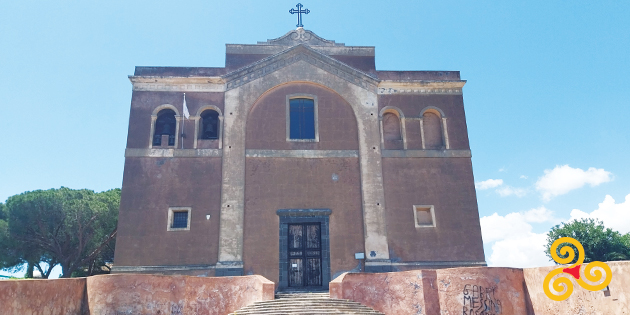Church of S. Maria dell'Alto in Paternò
The Church of Santa Maria dell'Alto in Paternò is the Mother Church of the city. It stands in a splendid panoramic position, on top of the historic hill, at the apex of the eighteenth-century staircase.
It was built in the Norman era, in 1072, a time when the ancient town of Paternò was concentrated on the hill, at the behest of the Great Count Roger I of Sicily, and was dedicated to Santa Maria del Signore. It is believed that the church was built on the remains of a place of worship from the Byzantine era. According to historical sources, on the same site, in ancient times there was a pagan temple dedicated to the goddess Ibla. In the 18th century, the building was subject to major renovations including a change in orientation: originally the main façade faced the Simeto valley, where the ancient village was located, the subsequent development of the town in the eastern part on the plain below determined this change in orientation so that the new access faced the city. The building was damaged by the earthquake of 1693 and was rebuilt in Baroque style. The works to renovate the façade probably date back to the last twenty years of the 18th century.
The facade, in neoclassical style, has a large main entrance portal flanked on both sides by two square windows, and surmounted by a rectangular window, in turn flanked on both sides by two bell chambers on each side with a round arch. In the rear part of the building you can see the remains of the ancient medieval façade.
The interior is divided into three naves by two long rows of pillars made with exposed lava stone blocks, on which round arches are set, surmounted by a Tuscan-style cornice. Originally the roof of the building was made of wooden trusses, later replaced in the eighteenth century by a long brick vault. Some of these trusses are on display in the corridor adjacent to the sacristy. Of particular value is the floor of the two side naves made of ceramic terracotta, in polychrome colors. The right nave ends with the chapel of the Crucifix, where there is an ancient Baroque pulpit in carved white and gold wood, and dominated by a seventeenth-century wooden sculpture surrounded by a grandiose Baroque reliquary. The left nave ends with the chapel dedicated to the Sacrament enriched by an altar in inlaid marble surmounted by an inlaid tabernacle.
Among the works kept inside the church, of particular value are: the Byzantine panel of the Black Madonna with the Child in her arms, placed on the high altar, enclosed in a carved and gilded wooden frame; the baroque wooden choir dating back to 1650; the eighteenth-century wooden furniture of the sacristy, once the chapter house; the statue of San Vincenzo martyr dating back to 1500.
